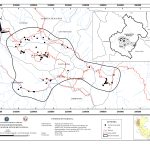Project Description
LOCATION
The project took place in three livestock production areas in the Selva Alta Peruana (Figure 1) in the departments of Amazonas and San Martin.
Zone A: District of Molinopampa, province of Chachapoyas, in the department of Amazonas. Altitude from 2200 to 2600 m.o.s.l., annual precipitation is 910 mm, average maximum and minimum temperatures are 24.9°C and 13.6°C, respectively. Holdridge life zone clasification is dry forest lower montane tropical (bs-MBT).
Zone B: Valley of Huayabamba, province Rodríguez de Mendoza, departament of Amazonas. Altitude from 1500 to 2000 m.o.s.l., annual precipitation is 1010 mm, average maximum and minimum temperatures are 25.1°C and 14.4°C, respectively. Holdridge life zone clasification is moisture forest premontane tropical (bmh-PT).
Zone C: Province of Moyobamba, departament of San Martin. Altitude from 830 a 1040 m.o.s.l., annual precipitation is 1305 mm, average maximum and minimum temperatures are 26.6 °C and 16°C, respectively. Holdridge life zone classification is wet forest premontane tropical (bh-PT).
Objectives
The overall objective was to asses and promote adoption of silvopastoral systems to the local producers with the support of a dynamic simulation tool.
The specific objectives were:
- Asses economic and environmental parameters to generate a database of plant species (trees, shrubs, grasses and legumes) in the silvopastoral systems.
- Develop a dynamic simulation model that incorporates productivity estimates, economic, and environmental impacts of implementing silvopastoral systems.
- Promote adoption of silvopastoral systems in the Selva Alta Peruana.
project partners
Universidad Nacional Agraria La Molina (UNALM)
Universidad Nacional Toribio Rodríguez de Mendoza (UNTRM)
Instituto Nacional de Innovación Agraria (INIA)
North Carolina State University (NC State)
funding agency
Programa Nacional de Innovación Agraria (PNIA)



